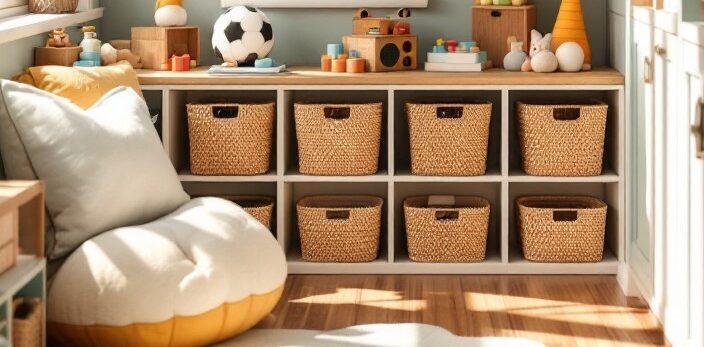Decluttering & Organizing Kids’ Spaces—Where to Start!
If you’re tired of stepping over toys, searching for lost shoes, and feeling like your child’s space is in a constant state of chaos—you’re not alone! Kids’ rooms, playrooms, and homework stations can easily spiral out of control. But the good news? You can create a functional, organized space that your kids can actually maintain—without losing your sanity in the process.
Did you know that children who grow up in organized environments tend to develop better time management skills and experience lower levels of stress? A structured space helps them feel in control and promotes independence!
The key is finding a balance between involving your children and setting up structure behind the scenes. Kids need ownership over their spaces, but as a parent, you can create systems that set them up for success. Here’s how to get started:
Step 1: Declutter WITH Your Kids
Decluttering is the first step to an organized space. While it might be tempting to do this alone, kids should be involved—especially when it comes to their belongings. Teaching them to sort, evaluate, and let go of things they don’t use will help them develop lifelong organizing skills.
Make Decluttering Fun!
Make It a Game – Set a timer and see how many toys they can donate in five minutes.
The “Does This Deserve a Spot?” Test – Hold up an item and ask:
- Do you still play with this?
- Do you love this?
- Would another child enjoy it more?
Use the Rule of Three – Let them pick their three (or five or whatever quantity that you decide is best for your child) of their absolute favorite stuffed animals, dolls, play sets, etc. Anything extra is a bonus and can be considered for donation.
Why This Works: When kids have a say in what stays, they feel empowered rather than forced into organizing.
“Children thrive in environments where they know what to expect. A clutter-free space gives them a sense of control and reduces overwhelm.”
– Marie Kondo
Step 2: Sort and Set Up Storage
Once you’ve decluttered, it’s time to create a storage system that actually works. This step is best done without your kids, so you can focus on structure rather than distractions.
Keep It Simple – Fewer steps to put things away = a system they’ll actually follow.
Use Clear Bins or Picture Labels – If they can see what’s inside, they’ll know where things go.
Make It Kid-Height – Store everyday items within their reach so they can help with cleanup.
Limit Overstuffing – If a bin is full, it’s time to rotate or declutter!
Why This Works: If kids help organize, they may try to keep way more than they need, making the process take much longer.
Stay tuned! In next week’s post, we’ll cover how to maintain these systems, prevent clutter from coming back, and create easy daily habits. In the meantime, reach out if you have any questions!

